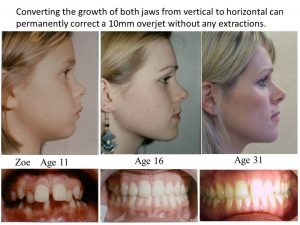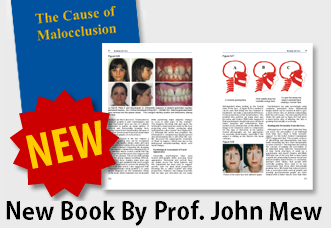Growth Direction – Can it be Changed?
At the 2005 Northcroft Memorial Lecture, Professor Nigel Hunt said “Of all the problems that confront us, it is abnormalities in the vertical dimension, whether they be in the growing child or the adult, which still present the greatest difficulties both in treatment itself, as well as maintenance of the treatment outcome”, The big majority of orthodontics in Britain is carried out with fixed appliances and the evidence suggests that these routinely increase vertical Growth, usually slightly but sometimes severely (Battagel 1996). Lengthening the face makes it less attractive (Lundstrom et al 1987). I think orthodontists are embarrassed about this but accept it as unavoidable.
To establish the facts, two UK orthodontists compared the direction of growth in a closely matched group of people with 10mm overjets and downward growing faces, treating them either by conventional fixed appliances or by appliances designed to change their oral posture. 10 millimetre overjets are rare and only twelve subjects were available. They were divided into two groups and treated prospectively by the alternate methods at two different centres. The X-rays were traced by the authority providing the fixed appliances. The pogonions of the patients undergoing fixed appliances cases were found to have grown at an angle of 74.4° (range 59° to 90°) to the SN plain, while for the posture group the average was 50.6° (range 37° to 65°).
A difference of 24.8⁰ in growth direction is unusual especially considering this is an average and that many orthodontists struggle to achieve any reduction in growth direction. The Bolton study found that the normal direction of growth of people without malocclusion is about 55⁰, showing that these very vertically growing faces finished better than average. As a matter of interest one of the cases with a 10mm overjet returned to the clinic concerned about a small diastema and the picture below shows the long term result of changing oral posture.


